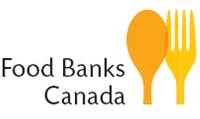Twelve per cent of Canada’s food bank users are Aboriginal: report
 Food Banks Canada (a national charitable organization whose membership serves apx 85% of those using emergency food programs) has just released its HungerCount 2010 survey and it contained a number of Aboriginal references:
Food Banks Canada (a national charitable organization whose membership serves apx 85% of those using emergency food programs) has just released its HungerCount 2010 survey and it contained a number of Aboriginal references:
- “The need for food assistance increased almost across the spectrum this year [including] more Aboriginal people”
- “The overall number of Aboriginal people accessing food assistance programs grew by 26% in 2009, and again by 13% in 2010”
- Despite making up just under 4 per cent of Canada’s general population, Aboriginal individuals constitute just over 12 per cent of all food bank users
- Saskatchewan was the province with the greatest proportion of Aboriginal clients at just over 52%
- Ontario food banks were accessed by 28,144 Aboriginal people, or over 10% of the 242,495 people who self-identify as Aboriginal in that province
- Aboriginal people made up nearly 95% of overall users in the three northern territories combined
The data for the survey was collected in March of this year.
UPDATE:
Just to clarify the methodology used by the survey, data are based not on the number of food bank visitors, but on the total number of visits.
That means each person is counted “as many times as they were assisted during the month.” Here’s an example of how it works:
300 individuals assisted once = 300 total visits
200 individuals assisted twice = 400 total visits
UPDATE 2:
A mea culpa is in order, on two fronts.
Firstly, my original interpretation of the Ontario number was incorrect. The fifth bullet originally listed (and since amended) above referred to a table found on page 7 of the HungerCount 2010 survey entitled “TABLE 3: Self-identified First Nations, Métis, and Inuit people assisted by food banks: March 2010.”
I initially took that to mean that all the figures in the table referred to just Aboriginal people. In fact, the table lists two kinds of numbers:
i) the total number of all food bank visitors (‘Total Assisted’),
i.e., Aboriginal and non-Aboriginal visitors combined
ii) the percentage of that total that was Aboriginal only (‘Percent Aboriginal’)
Which means that instead of there being “a whopping 402,056 [visits] by Aboriginal people” to Ontario food banks (as originally written), it was actually 28,144 Aboriginal people, or 7% of all food bank users.
Secondly, the statistics presented in the HungerCount 2010 survey actually refer to the number of people using food banks not their number of visits.
My sincere apologies for totally bungling these measures and methods, and I hope that these regrettable errors took nothing away from what are very serious issues for all concerned.
Thanks to Food Banks Canada for catching and clarifying my errors.


Thanks for the coverage of the report! Just want to address a couple of points – re: methodology, the number of people assisted is actually separate individuals, rather than total visits. We do collect information on both, but the HungerCount only presents the former.
Re: the Ontario figure of 402,056 – this is the total number of people assisted in March by Ontario food banks, of which 7% identified as Aboriginal (see Table 3 in the report).
Thanks again,
Shawn Pegg
Food Banks Canada
I appreciate you catching the errors of interpretation in my post.
I have since amended the mistaken content re: Ontario, and apologize for the confusion I have no doubt generated among readers.